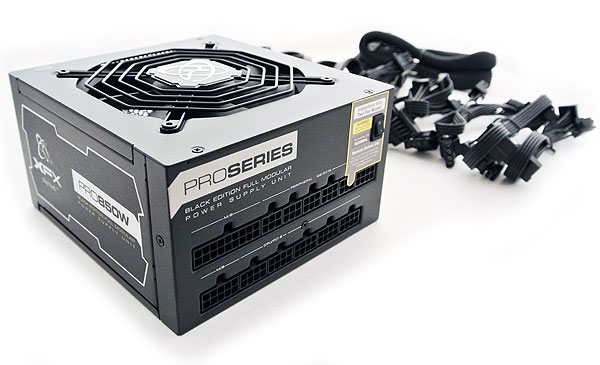GeForce GTX 750 Ti Review: Maxwell Adds Performance Using Less Power
Test Setup And Benchmarks
We tested all of the cards in today's story with each company's latest beta drivers: Catalyst 14.1 beta 6 from AMD and 334.67 beta from Nvidia, however the new GeForce GTX 750 Ti required a special 334.69 beta driver. We used medium- to high-detail settings at 1920x1080 to give the GeForce GTX 750 Ti and its competition a realistic workload, which should strike a good balance between image quality and performance for this class of card.
| Header Cell - Column 0 | Test System |
|---|---|
| CPU | Intel Core i5-2550K (Sandy Bridge), Overclocked to 4.2 GHz @ 1.3 V |
| Motherboard | Asus P8Z77-V LX. LGA 1155, Chipset: Intel Z77M |
| Networking | On-Board Gigabit LAN controller |
| Memory | Corsair Performance Memory, 4 x 4 GB, 1866 MT/s, CL 9-9-9-24-1T |
| Graphics | Sapphire Radeon R7 260X1100 MHz GPU, 2 GB GDDR5 at 1625 MHz (6500 MT/s)XFX Radeon HD 7850860 MHz GPU, 1 GB GDDR5 at 1200 MHz (4800 MT/s)Sapphire Radeon R7 265925 MHz GPU, 2 GB GDDR5 at 1400 MHz (5600 MT/s)Reference Radeon R9 270925 MHz GPU, 2 GB GDDR5 at 1400 MHz (5600 MT/s)Reference GeForce GTX 650 Ti925 MHz GPU, 1 GB DDR3 at 1350 MHz (5400 MT/s)Reference GeForce GTX 650 Ti Boost980/1033 MHz GPU, 2 GB GDDR5 at 1502 MHz (6008 MT/s)Reference GeForce GTX 660980/1033 MHz GPU, 2 GB GDDR5 at 1502 MHz (6008 MT/s)Reference GeForce GTX 750 Ti1020/1085 MHz GPU, 2 GB GDDR5 at 1350 MHz (5400 MT/s) |
| Hard Drive | Samsung 840 Pro, 256 GB SSD, SATA 6Gb/s |
| Power | XFX PRO850W, ATX12V, EPS12V |
| Software and Drivers | |
| Operating System | Microsoft Windows 8 Pro x64 |
| DirectX | DirectX 11 |
| Graphics Drivers | AMD Catalyst 14.1 Beta 6, Nvidia GeForce 334.67 BetaNvidia GeForce 334.69 Beta for GeForce GTX 750 Ti |
We've almost completely eliminated mechanical storage in the lab, and instead lean on solid-state drives to alleviate I/O-related bottlenecks. Samsung sent all of our offices 256 GB 840 Pros, so we standardize on these exceptional SSDs.
Naturally, discrete graphics cards require a substantial amount of stable power, so XFX sent along its PRO850W 80 PLUS Bronze-certified power supply. This modular PSU employs a single +12 V rail rated for 70 A. XFX claims that this unit provides 850 W of continuous power (not peak) at 50 degrees Celsius (a higher temperature than you'll find inside most enclosures).
| Benchmark Configuration | |
|---|---|
| 3D Games | |
| Metro: Last Light | Version 1.0.0.14, Built-in Benchmark |
| Grid 2 | Version 1.8.85.8679, Built-in Benchmark Scene D6 |
| Assassin's Creed IV: Black Flag | Version 1.05, Custom THG Benchmark, 40-Sec |
| Battlefield 4 | Version 1.0.0.1, Custom THG Benchmark, 90-Sec |
| BioShock Infinite | Version 1.1.24.21018, Built-in Benchmark |
| Far Cry 3 | Version 1.05, Custom THG Benchmark, 55-Sec |
| Arma 3 | Version 1.10.114.700, Custom THG Benchmark, 30-Sec |
Get Tom's Hardware's best news and in-depth reviews, straight to your inbox.
-
meluvcookies on performance, I'll take the extra frames of the 265, but damn, for 60w, I'm totally impressed by this card. both the 750Ti and the R7 265 would be decent upgrades from my aging GTX460.Reply -
s3anister ReplyBut without the big cooler, GTX 750 Ti is daintier than a lot of sound cards we've tested.
I'm pretty sure you meant to type "video cards" on page one there. Cheers. -
Bloob AlsoReplyIt’s difficult to make this story all about frame rates when we’re comparing a 60 W GPU to a 150 W processor
Is a bit confusing. -
cangelini Reply
Actually meant sound card :) It's definitely smaller than a small video card, but I even have sound cards here that are larger.But without the big cooler, GTX 750 Ti is daintier than a lot of sound cards we've tested.
I'm pretty sure you meant to type "video cards" on page one there. Cheers. -
Sangeet Khatri Well.. there is not a lot of performance in it, but I love it for a reason that it is a 60W card. I mean for 60W Nvidia has seriously nailed it. The only competition is way behind, the 7750 performs a lot less for similar wattage.Let's see how AMD replies to this because after the launch of 750Ti, the 7750 is no longer the best card for upgrading for people who have a 350W PSU.I don't generally say this, but Nvidia well done! Take a bow.Reply -
houldendub Nice little card, awesome! I feel like this would be an absolutely awesome test bed for a dual chip version, great performance with minimal power usage.Reply -
thdarkshadow The whole time I was reading the review I was like it isn't beating the 650ti boost... :( but then I remembered it uses less than half the power lol. I am impressed nvidia. While I make purchases more on performance than power consumption I can still appreciate what nvidia is doingReply -
houldendub Reply12707408 said:Anybody else notice the lesser shaders and TMUs on the Zotac card in GPU-Z?
Don't take this as fact, but the drivers look newer for the Zotac card than the others, possibly just a bug with the older drivers? The cards are advertised as having 640 shaders anyway.
Also weird, the GPU-Z screenshot is taken with Windows 8, whereas the Gigabyte and MSI cards are on Windows 7. The mystery continues...


